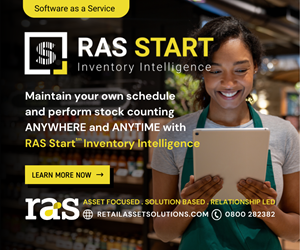retail environment
Experiences are as important as experience
EDITOR'S NOTE: These two articles first appeared in the US magazine's September - October 2019 and January - February 2020 editions as part of an ongoing series on diversity and inclusion. To read these and other articles from the US magazine, go to LossPreventionMedia.com.
When building retail teams, experiences are as important as experience
by Brian Dodge
Building and maintaining a diverse and inclusive workplace is only essential for those businesses that want to be successful. If growth and relevance are nowhere among your goals, read no further. But if they are, there's work to be done.
We all know that successful teams are ones made up of individuals who complement the skills and experience of one another. Job descriptions and resumes exist to help identify complementary team members. But managers don't hire resumes; they hire people who show up to work each day with professional skills, as well as countless insights, qualities, and biases that result from their unique personal experiences.
Recognising the value and opportunity of the whole person, not just their resume-worthy skills, is critically important when building effective teams. Consider your own life experiences. How have they shaped your world view and the way that you approach your work, your colleagues, and others? What skills do you have that spring from those experiences but don't show up on your resume? I suspect the list is as long for others as it is for you.
Quite simply, when fully embraced, diversity within teams helps engender better understanding among team members and ultimately with customers, resulting in better interactions through all facets of the business. This bears out in the data, which show that companies that maintain a diverse and inclusive environment perform better than those that do not.
The relevance of diversity to asset protection leaders is obvious. Today, a bad interaction with a customer can go viral quickly and cause lasting damage to a retailer's brand. For asset protection leaders, this risk is ever-present and cannot be wished away. Action is essential. Staff training is an important start, but embracing diversity and inclusion within asset protection teams is the next logical step to substantially reducing the risk.
Leading retailers recognise that building teams made up of individuals with the right professional skills and perspectives based on varying life experiences is good for business, especially when they closely mirror the makeup of their customer base. Leading retailers also understand that their diversity and inclusion task is not complete when team members are hired. In fact, it's just the beginning because truly unlocking the tremendous power of a diverse team requires that the work environment encourage team members to freely draw upon their unique experiences to do their jobs.
RILA Initiative
Recognising the desire among retailers to excel in this area and the complex challenge of doing so, the Retail Industry Leaders Association (RILA) launched the Retail Diversity and Inclusion Initiative in 2018. RILA is a Washington, DC-based trade association representing major retailers. The goal of the effort is to help companies advance their efforts in this area by:
- Working directly with retail practitioners to reflect the industry's unique needs,
- Supporting retailers at all points in their diversity and inclusion evolution, and
- Emphasising meaningful progress rather than a standard definition of success
The effort has also provided a platform for cross-departmental dialogue around diversity and inclusion. This collaboration was on display in May 2019 in Denver, Colorado, at the RILA Asset Protection Conference, when diversity and inclusion practitioners presented with their asset protection colleagues in a series of sessions to share individual case studies and highlight the importance of a commitment to diversity within the asset protection practice.
Not surprisingly, the discussion revealed that asset protection leaders understand the importance of diversity and inclusion to their practice and their company, but no one believes that they have mastered the task. So the discussion will continue.
Brian Dodge was promoted to president of the Retail Industry Leaders Association (RILA) effective January 2020. RILA is a Washington, DC-based trade association representing major retailers. Prior to January, Brian was the chief operating officer overseeing public affairs, legal and compliance, human resources and administration, membership, and financial operations. He can be reached at Brian.Dodge@rila.org.
Leveraging diversity to enhance the customer shopping experience
By Timothy L. Williams, Esq. and Paul E. Jaeckle, LPC
At Meijer, we are dedicated to enriching lives in the communities we serve. Fulfilling this goal begins with a focus on serving people-in the workplace, in our stores, and in our communities. Our approach to diversity and inclusion, as well as asset protection, impacts our ability to deliver on this goal.
As a result, our diversity and inclusion and asset protection teams challenged themselves to answer the following question: can we create an inclusive shopping experience that both is consistent with our brand and protects team members, customers, and company assets? Once it was determined that the answer was yes, we set out to identify what that looks like and, more importantly, how we get there.
In defining the "what", we recognised a few universal truths: first, the intersection between diversity and inclusion and the customer experience is multi-faceted and complex. Second, because our goal remains aspirational, we needed to prepare for a journey as opposed to a destination. Third, there will be situations where, despite acting consistently with our documented processes and procedures, we can be the subject of criticism and negative perceptions.
Instead of deterring us, we allowed these realities to shape the design of our "how". Specifically, we asked ourselves the following questions:
Can asset protection leverage diversity and inclusion to influence the customer shopping experience?
How has the public perception of law enforcement impacted the customer experience, and does it vary by the communities and customers we serve?
What is the role of law enforcement in asset protection, and does it vary by the communities and customers we serve?
Inherent in each of these questions was the reality that the answers often varied depending on who was responding.
As a result, we resolved to dig deeper and explore the root of the disconnect.
Can Asset Protection Leverage Diversity and Inclusion to Influence the Customer Shopping Experience?
The answer for us was a resounding yes. Asset protection leaders, like any other business leaders, can and should leverage diversity and inclusion to accelerate their businesses and drive outcomes.
It is widely recognised that building teams with the right professional skills and varied perspectives and life experiences is good for business. This is particularly true when the varied perspectives and life experiences closely mirror those of the customers and communities we serve. Representation, however, is but one facet of diversity.
Representation without a voice undermines inclusion, limits the positive impacts of diversity, and weakens team member engagement. As such, we challenged ourselves to look at the diversity of our team and the type of environment we create.
We define diversity as the characteristics, traits, and experiences that make each person unique. But our diversity dimensions extend well beyond race, ethnicity, and gender to include, but not be limited to, age, race, gender identity, ethnicity, personality, sexual orientation, physical appearance, physical or mental ability, military experience, marital status, parental status, income, political beliefs, educational background, religious beliefs, language, location, work style, and interests.
Next, we examined the asset protection environment. Were we collaborative? Did we create a space where people felt comfortable bringing their true authentic self to work? Did we, as leaders, show a commitment to diversity and inclusion that our teams experienced? Did our team members feel heard and supported? In short, were our teams engaged?
How Has the Perception of Law Enforcement Impacted the Customer Experience and Does It Vary by the Communities and Customers We Serve?
In digging into the varied responses to both questions, we acknowledged that the perceptions of and experiences with law enforcement are not the same among all communities and often split along racial or ethnic lines. Rather than debate the perceptions and experiences of these varied communities, we sought to account for them in our approach. At Meijer, we follow a fundamental philosophy of enriching lives in the communities we serve, and in order to embrace that, we need to lead and be accountable to all the lives in those communities.
Our Response
Based on our self-analysis, the asset protection and diversity and inclusion leadership teams mapped a course of action that is consistent with our diversity and inclusion focus, which is to drive diversity and inclusion by focusing on our teams, customers, and communities. But it is also authentic to who we are as an organisation and aligns with our goal of enriching lives in our communities.
For example, when evaluating a customer-facing shrink initiative, asset protection leveraged a data-driven approach to identify a solution designed to have a significant financial impact, but that also had the potential to impact our customer experience. Rather than rely strictly on the data, the team sought input from diverse stakeholders, weighed the potential impact to various communities, and made adjustments consistent with creating an inclusive shopping experience that both is consistent with our brand and protects team members, customers, and company assets.
Similarly, consistent with the leadership learning and development investments being made at Meijer, asset protection challenged its leaders to assess their cultural awareness and learn about the impact unconscious bias can have, if left unchecked, on creating a diverse and inclusive culture.
While we are pleased with our initial efforts, work remains to be done. More importantly, we recognise the value of the partnership between asset protection and diversity and inclusion and are committed to leveraging it to drive improved outcomes for the business. As noted above, our goal is aspirational, and we are prepared for the journey.
Timothy L. Williams, Esq. is vice president of diversity and inclusion, and Paul E. Jaeckle, LPC is the vice president of asset protection and safety for Meijer, Inc., a Grand Rapids, Michigan, based regional supermarket chain. Timothy previously served as MeijerÕs vice president and assistant general counsel, managed the litigation and labour and employment law groups, and supported the supply chain and food safety teams. Paul joined Meijer in 2017 after twenty years with Walmart. He has led several teams in asset protection and operations, both in the field and the corporate office. He is the chair of RILAÕs Asset Protection Leaders Council, a board member with the Loss Prevention Foundation, vice chair of the University of FloridaÕs Loss Prevention Research Council, a member of NASP Retail Advisory Committee, and a board member of Silent Observer.






